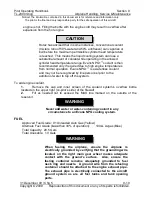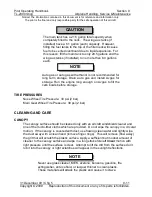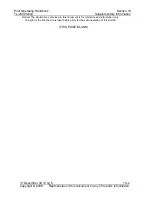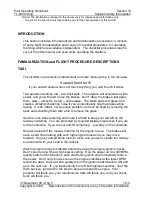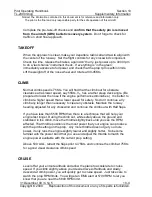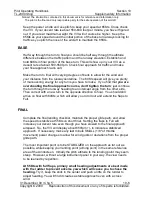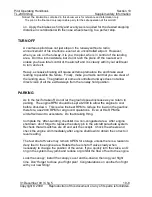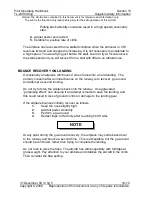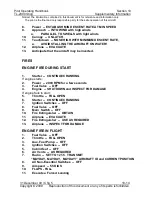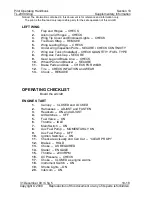
Pilot Operating Handbook
Section 10
TL-2000
Sting
Supplementary Information
Notice! The information contained in this document is for reference and information only.
The pilot is the final and only responsible party for the safe operation of this aircraft.
31 December 09 / Chg 5
10-12
Copyright © 2009 Reproduction of this document or any of its parts is forbidden.
EMERGENCY PROCEDURES
AIRCRAFT PARACHUTE SYSTEM
Slow the Aircraft, If Possible
1.
Ignition -- OFF
2.
Harnesses -- TIGHTEN
3.
GRS Activation Handle -- PULL FIRMLY (25 POUNDS)
4.
Radio -- SET TO 121.5. TRANSMIT “MAYDAY, MAYDAY, MAYDAY!”
with AIRCRAFT ID and CURRENT POSITION
5.
Transponder -- SET TO 7700
6.
Glidepath -- CONTROL IF POSSIBLE
7.
Impact Position -- PULL LIMBS CLOSE TO BODY and COVER FACE
ENGINE FAILURES
ENGINE FAILURE DURING TAKEOFF ROLL (ABORT)
1.
Throttle -- IDLE
2.
Brakes -- APPLY
3.
Wing Flaps -- RETRACT
ENGINE FAILURE (LANDING) IMMEDIATELY AFTER TAKEOFF
1.
Airspeed -- 70 KIAS
2.
Wing Flaps -- HALF
3.
Fuel Valve -- OFF
4.
Main Switch -- OFF
ENGINE FAILURE DURING FLIGHT
1.
Airspeed -- 70 KIAS
2.
Fuel Valve -- ON
3.
Aux. Fuel Pump -- ON
4.
Ignition Switches -- ON
5.
Starter -- ENGAGE

